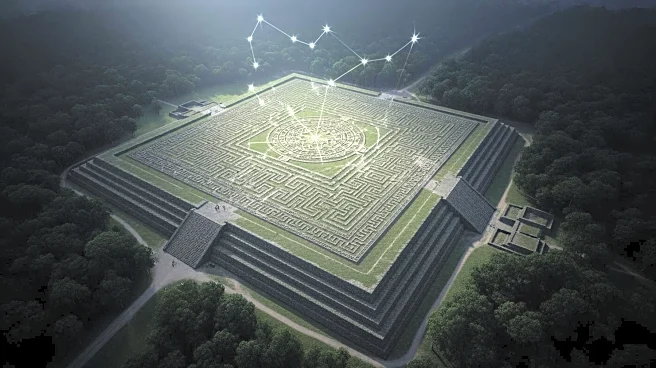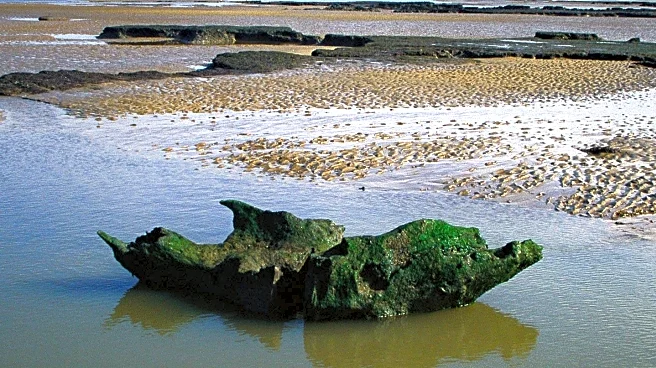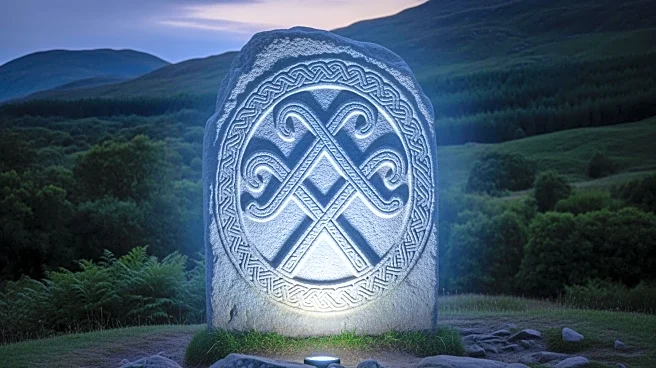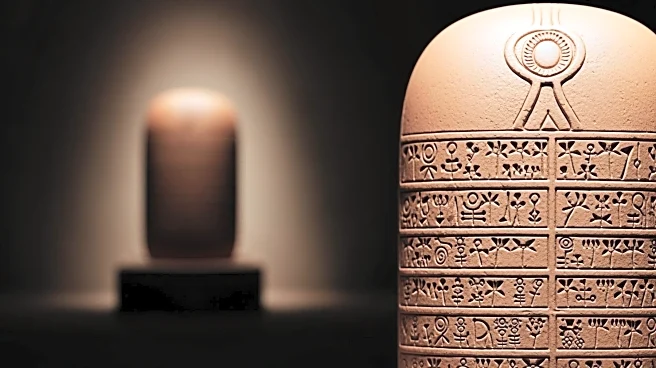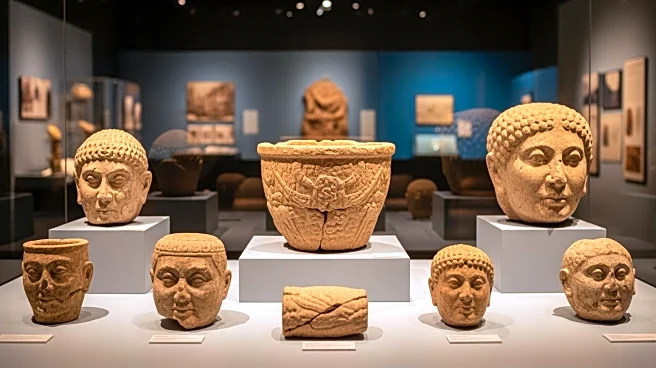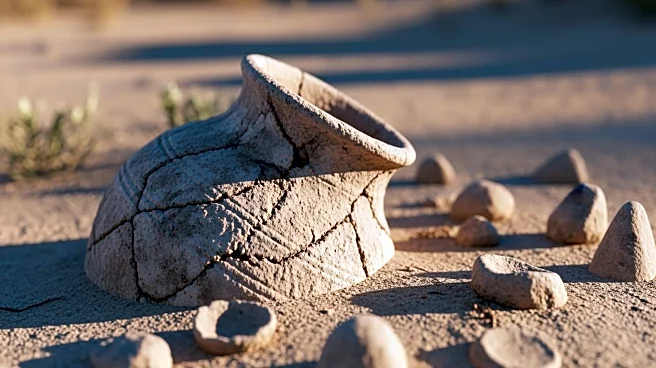What's Happening?
Recent research suggests that Aguada Fénix, the largest and oldest known Maya monument, may have been constructed as a cosmogram to map the stars. Led by archaeologist Takeshi Inomata, the study reveals
that the monument's architecture aligns with Mesoamerican calendar sunrises and directions. The site features color-coded pigment caches and marine shells in cross-shaped ditches, reinforcing directional symbolism central to early Maya cosmology. The findings indicate that the monument was built communally by astronomers without elite rulers, showcasing ambitious early settlement patterns.
Why It's Important?
The discovery of Aguada Fénix as a potential cosmogram offers new insights into Maya civilization and its astronomical practices. It challenges previous assumptions about the role of elite rulers in early Maya society, suggesting a communal approach to monumental construction. This research enhances our understanding of ancient Maya culture and its sophisticated knowledge of astronomy, which could influence current archaeological methodologies and interpretations.
What's Next?
Further excavations at Aguada Fénix are planned to explore potential residences and understand the daily lives of the people who built the site. Researchers aim to uncover more about the social structure and community dynamics of early Maya settlements, which could provide a broader understanding of ancient Mesoamerican civilizations.
Beyond the Headlines
The study of Aguada Fénix highlights the importance of interdisciplinary approaches in archaeology, combining architectural analysis with astronomical and cultural studies. It underscores the potential for ancient sites to reveal complex societal structures and knowledge systems that can inform modern scientific and cultural perspectives.
